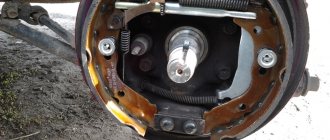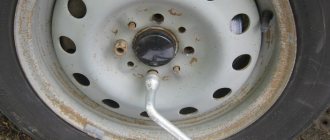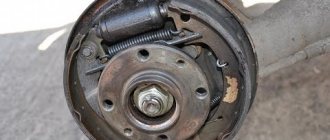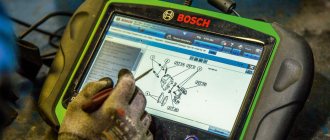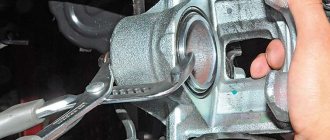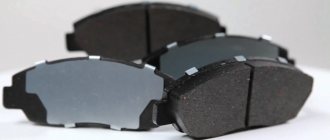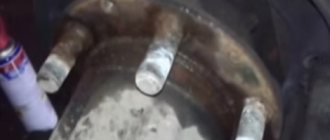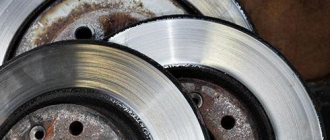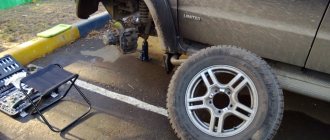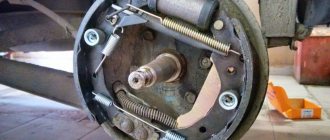The Hyundai Accent is one of the most reliable in its class. Therefore, despite the fact that the model has ceased to be produced, it is still popular in our country. It is only important to monitor the basic systems of the vehicle. This primarily concerns brake pads. Their timely replacement will avoid accidents and other serious problems. You can do the repair yourself.
Installing new brake pads on this vehicle is easy. Discs are installed at the front. On the rear axle there are drums. It is also important to remember that the parts themselves are divided into two large categories - original and non-original. The former have an important advantage - a larger resource, as well as a low probability of buying a defect. At the same time, there are a large number of fakes on the market.
Hyundai Accent: replacing rear pads
Replacing the rear pads on an Accent is quite simple, but you need to know a few tricks and the sequence of work. Cars are equipped with disc brakes in front and drum brakes in the rear. The latter have significantly lower efficiency, but high efficiency is not needed there. The rear brakes take on about 30% of the load when braking, and also work when the car is parked. But you still need to change the pads - for some, every 10 thousand km, and for others, every 100 thousand km. Everything is individual and depends on many parameters.
Pad selection
The manufacturers of the rear pads for the Accent are the same as for the front ones. This vehicle is equipped with 2 types of drums, which differ in size. The pads are selected depending on the drum. According to reviews from drivers, they do not have any outstanding characteristics, have an average service life, and do not creak.
Rear drum pads Accent Tagaz until 2002 for 180 mm drum
I didn’t take the adjustable guides and plates because I didn’t have time. Even though they are rusty, I cleaned them, the teeth are all intact, the adjustment plates are also normal and generally lubricated, ok, enough for another 100 thousand. I don't see any point in changing.
Prehistory, I bought the pads along with a repair kit a year ago, since no one had ever climbed into the drums in 93,000 km (at that time). But at 98,000 km, a creaking and rustling sound appeared in the morning when pressing the brake (it was also treated by pressing the brake), I was still waiting for a warm day so that I could finally climb into the yard near the entrance and change the pads. But in Moscow, as we know, the problem with warm days in March, in the end I’m driving home from work at 21.00 (something unreal is shuffling in the drum), I back up, park near the house on 03/07/19 and a click is heard and the rear wheel locks where it was shuffling, well we sailed in the morning to pick up gifts (March 8th, after all))), we had to park it somehow. I get up early and sort this whole thing out, in the awesome rain and sleet))): 1. We put the wheel chocks on the opposite side of the jack, and set it to speed. 2. We relax the handbrake, to do this we remove the plastic protection by unscrewing the two screws at the edges and pull it up, it will snap off on its own. (The salon, of course, is tinny after winter, in the spring for dry cleaning))
Removing the front brake mechanisms
The design of the front wheel caliper is shown in the figure. Recommended tightening torques for all threaded connections are also indicated. The procedure for carrying out work when removing brake mechanisms on a Hyundai Accent:
- Unscrew the bolt from below and lift the entire caliper up. Secure it with wire so as not to damage the hose.
- Remove the pads.
Before performing these manipulations, it is necessary to loosen the wheel bolts and raise the car using a jack. After this, you can completely remove the wheel. Be sure to install stops under the rear wheels so that the car cannot roll away. And never press the brake pedal with the caliper removed - this will cause the pistons to squeeze out and you will have to replace the entire mechanism.
Installation of front brake calipers and replacement of consumables
Diagram of the front brake caliper of a Hyundai Accent.
- Pads.
- A cover that protects from dust and dirt.
- Front brake cylinder piston.
- O-ring.
- Caliper with working brake cylinder.
- Bushing bolt cover.
- Bushing bolt.
- Brake bleeding fitting.
- Fitting cap.
- Bolt securing the brake hose.
- Brake hose.
- Washer.
- Guide pin cover.
- Finger.
- Bolt securing the caliper.
- Fastener.
- Sleeve.
- Bushing cover.
- Internal gasket.
- Spring.
- External gasket.
The front pads of a Hyundai Accent must be replaced as a set. Even if only 1 pad is worn out, you need to change all 4 at once. Remember, saving on brakes leads to emergency situations.
- First, pump out 20 ml of brake fluid from the reservoir with a syringe.
- We put the car on the handbrake and put chocks under the rear wheels.
- We jack up the right front part of the car and place supports.
- We remove the wheel.
- We unscrew the lower bolt securing the caliper from the engine side and lift the caliper up.
- We take out the old pads.
- We press the piston inside the cylinder using the handle of a screwdriver or any wooden stick.
- We install new parts, and place the block on which there is a wear sensor on the piston side.
- We put the caliper in place and tighten the lower bolt.
All that remains is to install the right wheel in its proper place and lower the car. Replacing the front pads of a Hyundai Accent on the left side is carried out in the same way.
Replacing rear brake pads Hyundai Accent
Let's start installing new pads. The left block with the metal piece for the handbrake should be inside.
I advise you to remember how you removed it and put it back, only with a new block. We take pliers and install the parking brake cable into the left block.
We return to the left block and install the mechanism as shown in the photo below. And the side that goes into the right block. We install all the springs that were removed. We clean the free base from dirt, prepare the pads, and a set of new spare parts for the current side.
Press with a washer. The threads of the strip also need to be lubricated beforehand. At this point, you REALLY want to put the drum in place, put on the wheel and go anywhere, for example, to your mother-in-law for pizza: Then we rotate it a little back and put the drum on completely.
Replacement process
To replace the rear brake pads of a Hyundai Accent, you need to prepare tools. For work you will need: a jack, a wheel wrench, pliers and a flat-head screwdriver. When everything is prepared, you can proceed directly to the process:
- We put the car on the handbrake.
The parking brake lever must be lowered all the way (the car is released).
Place wheel chocks under the front wheels.
Install wheel chocks (“shoes”) under the front wheels.
- Raise the rear of the car, where the pad will be changed, using a jack.
- We dismantle the wheel.
Loosen the wheel nuts, raise the rear of the car with a jack, place the car on secure supports, and remove the wheel.
- Remove the cap from the brake reservoir.
- We dismantle the top cover of the brake drum.
Remove the brake drum.
We move the working piston inward and fix it in this position.
We clean all parts of the brake mechanism from dirt, and use a screwdriver to pry off the upper tension spring.
- We squeeze the sliding parking brake levers inward.
- Compress the spring and unhook the handbrake cable.
Holding the support post of the front shoe on the back side of the brake shield, use pliers to press the bracket and turn the post by the shank until it aligns with the slot in the bracket, and remove the bracket and support post.
- Turn the pressure spring a quarter. In this case, it is worth holding the support stand.
- Now, you can remove the cup, spring and support post.
Having lowered the block, remove the lower tension spring and remove the front block.
All operations described below must be done with the second block in the same drum.
What rear brake pads can be installed on the second generation Hyundai Accent
Installing rear brake pads is relatively simple. Like many other cars of this class, a drum system is used. An important advantage of this is that the service life of one pair of linings is an order of magnitude longer than with disc brakes.
This is primarily due to the conditions. since the pads themselves are used in a closed space. There is no access to water, air or abrasive. Which has a positive effect on safety.
Causes of malfunction
The causes of rear brake pad failure are no different from the front ones. But it’s worth dwelling on them to know them:
What to choose?
Despite the fact that the price of original consumables is slightly overpriced, in terms of quality they are the best option. In addition, such brake pads are recommended by the manufacturer and are fully compatible with a specific model.
If you don’t want to overpay, then you should pay attention to Hi-Q pads. These are inexpensive, but at the same time very high-quality consumables that are compatible with the Hyundai Accent and demonstrate good responsiveness both when overheated and when cold. We use them both front and back.
What spare parts are needed?
And now in more detail about how to replace the rear pads on a Hyundai Accent yourself. It will take a little time, but you will have to work hard, since disassembling the nodes can be difficult. First, it’s worth mentioning the original spare parts that you need to buy:
- The Sangsin pads themselves are a set with part number SA046.
- The numbers for the pad clearance adjusters are 5837025000 for the right side and 5835025000 for the left side.
- There are also two supply mechanisms, numbers 5836624000 and 5835624000 (right and left, respectively).
- TRW repair kit, part number SFK358.
Useful tips
We put on 3 wheels - 2 rear and 1 front, jack them up and go for testing. I drove 3 km and found a slight rise.
There are brakes, the handbrake holds, you won’t get off the hook. Next weekend I plan to get to the ABS motor.
Hyundai Accent 2008, 102 l. With. — self-repair
Yes, I still need to take winter tires, there is still time before payday, it’s good that I live in the south. As a result, the pads do not move apart and are not brought to the drum as they wear out.
The result is increased wear and heating of the front brakes. The handbrake will also be weak, 15 or more clicks, and it is useless to pull it out of the cabin.
Contact us
This also applies to cars with ABS; they always brake well with the pedal in the floor, but with smooth braking and using the handbrake, there will also be underbraking at the rear. To resolve problems, contact a Korean car service, where they will do everything you need for a fee.
As a result, the brake pedal will become tighter, and when pressed lightly, the car will settle down noticeably better. Just like on rear disc brakes, the pads of which are always located as close to the brakes as possible.
If you want to do it manually, here is the procedure: Otherwise, the pads cling to the side of the drum and it cannot be removed 2 remove the wheel 3 remove the drum It is not necessary to knock, screw 2 suitable bolts into the holes of the drum, if it does not come off, then loosen the handbrake even more!
Don’t forget to pull back the bar that rests on the gear. We are trying to put the drum back on. Make sure that the drum is put on only slightly tightly, but can be removed without any problems.
Usually this corresponds to clicks; it is not advisable to do less, since clicks will cause the rear wheels to constantly slow down.
Hyundai Accent 2006, 102 l. With. — self-repair
But I will describe everything in detail, with all the nuances that I had to encounter. To begin with, in the cabin, remove the cover covering the handbrake between the front seats. We loosen the handbrake to make it easier to remove the drums.
However, the first drum took about 40 minutes to shoot, and I tapped it this way and that, and that’s all.
But we are more persistent than the drum - we gave in. The maximum permissible end runout of the brake disc is 0.05 mm.
Contact us
The thickness of the new brake pad lining is 9.0 mm, the minimum is 2.0 mm. When the thickness of the inner pad lining is less than 2.0 mm, the wear indicator begins to squeak, warning the driver about the need to replace the pads. The brake pads of the left and right wheels are replaced at the same time. On a Hyundai Accent with ABS, a wheel speed sensor A is installed in the hole in the steering knuckle, and a ring gear B is pressed onto the housing of the outer drive joint.
The rear wheel brake mechanism is drum-type, with a two-piston wheel cylinder and two brake pads, with automatic adjustment of the gap between the pads and the drum.
The standard thickness of the pad lining should be 4.8 mm, the minimum - 1.0 mm. The standard internal diameter of the brake drum is mm, the maximum is mm. The non-cylindricity of the working surface of the brake drum should not exceed 0.15 mm. The parking brake system is driven mechanically, by cable, to the rear wheels. It consists of a lever, a rod with an adjusting nut and two cables.
They are designed to limit the increase in fluid pressure in the hydraulic drives of the rear wheels after reaching a certain pressure in the master cylinder.
The corresponding fault code is recorded in the control unit’s memory, which is read using special equipment at the service center. The maximum permissible axial runout of the brake disc is 0.05 mm.
Replacing the rear brake pads of a Hyundai Accent 1.5 Hyundai Accent 2006 Tagaz
The thickness of the new brake pad lining is 9.0 mm, the minimum is 2.0 mm. When the thickness of the inner pad lining is less than 2.0 mm, the wear indicator begins to squeak, warning the driver about the need to replace the pads.
The brake pads of the left and right wheels are replaced at the same time.
VESKO-TRANS.RU
AutoNews / Reviews / Tests
Replacing Rear Pads Hyundai Accent Tagaz
Hyundai Accent Car Brake Pads
The 1st generation Hyundai Accent car appeared in the vastness of our country in the mid-90s of the last century. Replacement of rear pads on Hyundai Solaris (replacement of front pads). In a couple of years, this model gained such popularity among car owners that at the beginning of the new century, production of the 2nd generation Hyundai Accent was launched at the automobile plant in Taganrog.
Causes of malfunction
The causes of rear brake pad failure are no different from the front ones. But it’s worth dwelling on them to know them:
- Wear of the friction part. It can only be seen if you take the drum apart. According to the manufacturer's recommendations, the friction part should not be less than 2 mm.
- The friction part is cracked, chipped or chipped. This indicates that the pad needs to be replaced.
- All these reasons become decisive in the decision to replace the rear brake pads.
If brake fluid gets on the linings, it also leads to replacing the pads.
Installing new pads and adjusting the handbrake
Installation of new elements is carried out in reverse order. It should be noted that the handbrake is adjusted automatically - just squeeze it a few times.
What nuances might there be when replacing the rear pads on an Accent? If you look closely, there is quite a lot:
- Often, a set of pads does not contain springs; you have to buy them separately. The first part of the article indicates the batch numbers of the products.
- Also, the plates that adjust the handbrake often fail. It is best to install a new set, otherwise problems with setting up the mechanism will inevitably arise.
- The braking efficiency directly depends on the condition of the drums. If the excavation is large enough, it will be necessary to replace the elements and carry out their grooving and balancing.
If your car has beautiful wheels, then why spoil the appearance with drum brakes? It will be much better if you install disk ones. But in this case you will have to install a hydraulic handbrake drive. Thanks to such legal tuning, the safety of the car and its appearance increase.
Installation of rear drums and replacement of consumables
Diagram of the brake drum mechanism of a Hyundai Accent.
- A stand that supports the brake pads.
- Back shield.
- Rear, double-sided brake cylinder.
- Lever latch.
- Expanding bar.
- Handbrake lever.
- Upper return spring.
- Rear drum block.
- Clamp spring.
- Clamp.
- Drum.
- Lower return spring.
- Automatic regulator spring.
- Front drum block.
As with the front brakes, the rear brake pads are replaced all together. In addition to the main consumables, before replacement it is also necessary to buy repair kits for brake drums containing springs and bolts. According to the owners of Hyundai Accent, in addition to relatives, rear brake repair kits from VAZ Classics are best suited. Algorithm for replacing rear brake pads.
- We put the car in 1st gear.
- Loosen the handbrake cable.
- We put stops under the front wheels.
- Raise the rear of the car.
- We place bricks or other support under the back.
- We remove one wheel.
- We unscrew the bolt securing the drum to the hub (if your car has this bolt) and remove it.
- If the drum does not come off, screw two long M8 bolts parallel to each other into the free holes and tighten them.
- Next, according to the instructions, you should remove the hub, but if you only need to replace the pads, skip this procedure.
- After this, unhook the extension springs, the regulator spring and the handbrake lever.
- Remove the clamps. To do this, press on them one by one and turn the bolts located on the back of the brake shield.
- We take out the old pads.
- Press in the pistons of the rear working cylinder.
- Install new parts in reverse order.
If during installation the drum will not fit onto the shield, you can press it with gentle hammer blows through a wooden spacer.
